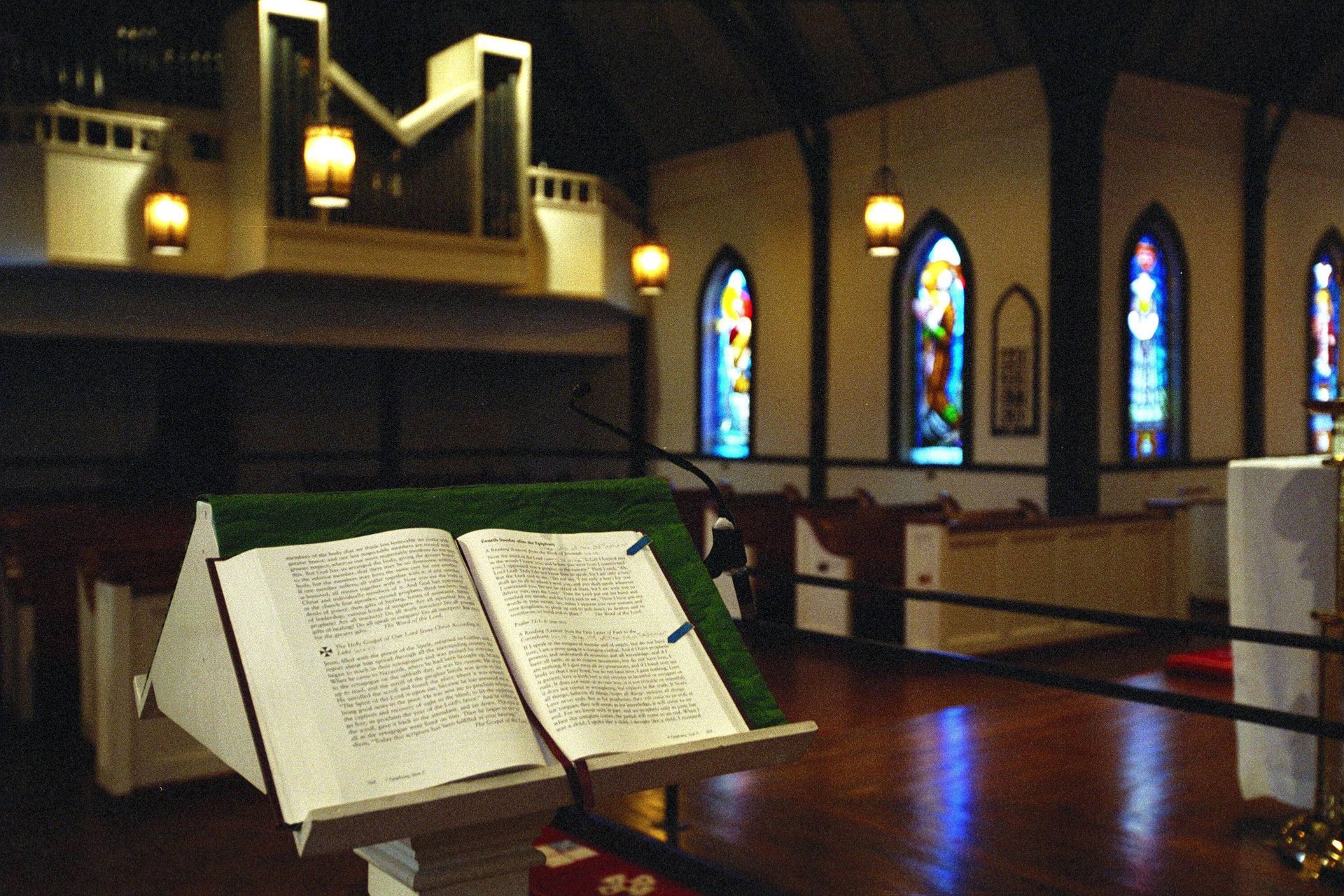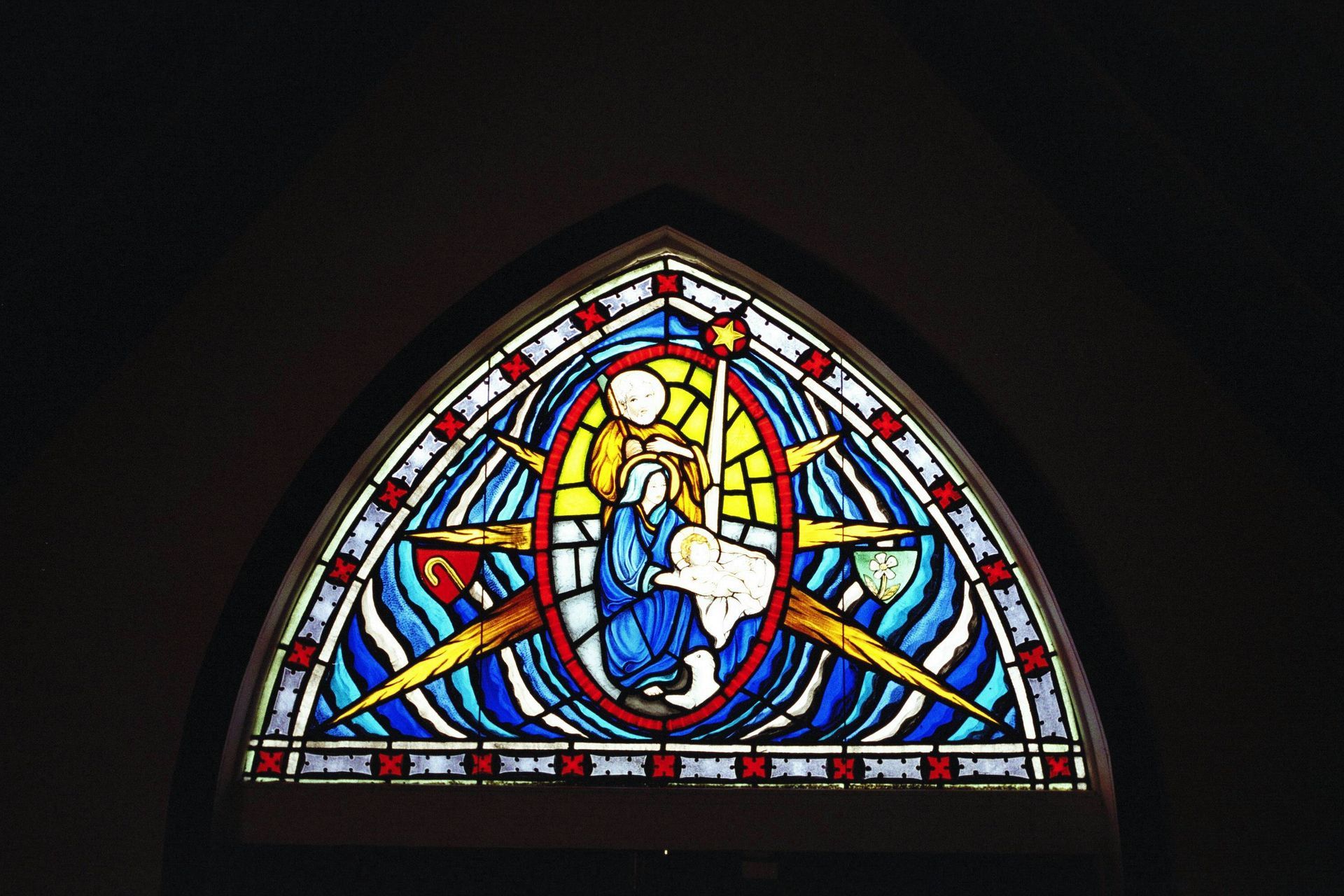Sacraments & Offices
Baptism
In the waters of baptism, we are lovingly adopted by God into God’s family, which we call the Church, and given God’s own life to share and reminded that nothing can separate us from God’s love in Christ. Holy Baptism, which can be performed through pouring of water or immersion in it, marks a formal entrance to the congregation and wider Church; the candidates for the sacrament make a series of vows, including an affirmation of the Baptismal Covenant, and are baptized in the Name of the Father, Son, and Holy Spirit. They are marked as Christ’s own for ever, having “clothed [themselves] with Christ” (Galatians 3:27).
All people of any age are welcome to baptized; we believe in one baptism for the forgiveness of sins, as the “bond which God establishes in Baptism is indissoluble” (BCP, p. 298).
Confirmation
The sacramental rite in which the candidates "express a mature commitment to Christ, and receive strength from the Holy Spirit through prayer and the laying on of hands by a bishop" (BCP, p. 860). Those who were baptized at an early age and those baptized as adults without laying on of hands by a bishop are expected to make a mature public affirmation of their faith, recommit themselves to the responsibilities of their baptism, and receive laying on of hands by a bishop (BCP, p. 412).
Marriage
The sacramental rite of the church in which two persons "enter into a life-long union, make their vows before God and the Church, and receive the grace and blessing of God to help them fulfill their vows" (BCP, p. 861). The union is understood to be intended by God for their mutual joy; for the help and comfort given one another in prosperity and adversity; and, when it is God's will, for the procreation of children and their nurture in the knowledge and love of the Lord (BCP, p. 423). At the Declaration of Consent, both persons promise to love, comfort, honor, and keep their spouse, in sickness and in health, and, forsaking all others, to be faithful to their spouse as long as they both live (BCP, p. 424). The congregation witnesses the couple's promises, and the members of the congregation promise to do all in their power to uphold the couple in their marriage. At the Marriage, the couple may pledge their lives to each other by the giving and receiving of rings as symbols of their vows. When desired, other appropriate symbols of their vows may be used instead of rings.
Burial of the Dead
Funeral rite for burial of a baptized Christian, including anthems, psalms, scripture readings, and prayers. The BCP provides both traditional and contemporary liturgies (pp. 469-507). This rite may serve as the liturgy of the word at a Requiem Eucharist. When there is communion at the Burial of the Dead, the commendation and the committal follow the communion of the people and the postcommunion prayer (BCP, pp. 482, 498). The burial rites also include the Apostles' Creed, a special form of the prayers of the people, forms for the consecration of the grave, and additional prayers that may be added after the Lord's Prayer. The BCP also provides an Order for Burial which permits the composition of a rite to suit particular circumstances "when, for pastoral considerations, neither of the burial rites in this Book is deemed appropriate" (pp. 506-507). The BOS provides appropriate texts for the burial of a person who was not a baptized Christian or who rejected the Christian faith. The burial office is an Easter liturgy. The liturgical color is appropriately white, and the Paschal candle should be lighted as a visible reminder of Jesus' resurrection and our hope of life everlasting in Christ. At the Burial of the Dead those who mourn may express grief and sorrow as they share in the community's expression of faith, hope, and mutual support in Jesus Christ.
Eucharist
The sacrament of Christ's body and blood, and the principal act of Christian worship. The term is from the Greek, "thanksgiving." Jesus instituted the eucharist "on the night when he was betrayed." At the Last Supper he shared the bread and cup of wine at a sacred meal with his disciples. He identified the bread with his body and the wine with his blood of the new covenant. Jesus commanded his disciples to "do this" in remembrance of him (see 1 Cor 11:23-26; Mk 14:22-25; Mt 26:26-29; Lk 22:14-20). Christ's sacrifice is made present by the eucharist, and in it we are united to his one self-offering (BCP, p. 859). The Last Supper provides the basis for the fourfold eucharistic action of taking, blessing, breaking, and sharing. Christ's body and blood are really present in the sacrament of the eucharist and received by faith. Christ's presence is also known in the gathered eucharistic community.
In the BCP, the whole service is entitled the Holy Eucharist. The first part of the service is designated the Word of God. It usually includes the entrance rite, the lessons and gradual psalm, the gospel, the sermon, the Nicene Creed, the prayers of the people, the confession of sin and absolution, and the peace. The second portion of the service is designated the Holy Communion. It includes the offertory, the consecration of the bread and wine in the Great Thanksgiving, the communion of the people, and the concluding prayers of thanksgiving and dismissal. A blessing may be given prior to the dismissal.
The eucharist is also called the Lord's Supper, Holy Communion, the Divine Liturgy, the Mass, and the Great Offertory (BCP, p. 859). The Hymnal 1982 includes a section with a variety of hymns for the Holy Eucharist (300-347), including "Come, risen Lord, and deign to be our guest" (305-306), "My God, thy table now is spread" (321), "Now, my tongue, the mystery telling" (329-331), and "I am the bread of life" (335).
© 2020 The Domestic and Foreign Missionary Society



